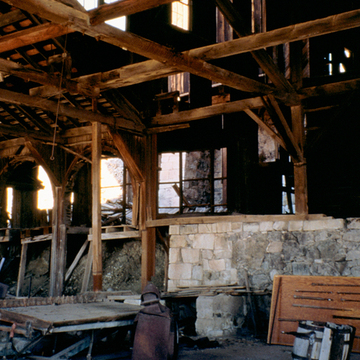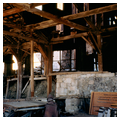This timber-frame structure set into the hillside overlooks Berlin. A wood trestle supported carts transporting ore to the top of the building, where the ore passed through a thirty-stamp mill that broke it into smaller pieces. Gradually the ore was crushed to a pulp, heated, then mixed with mercury, which adhered to the gold and silver in the ore. The precious metals were then separated from the mercury and converted into bullion. A long shed roof covered with standing-seam metal slopes over the board-and-batten-sided walls, terminating at the base of the mill. In the 1970s the state undertook a major stabilization of the building, hiring architect Edward S. Parsons of Reno, who had worked on other historic preservation projects in the state, to reconstruct the roof.
You are here
Mill
If SAH Archipedia has been useful to you, please consider supporting it.
SAH Archipedia tells the story of the United States through its buildings, landscapes, and cities. This freely available resource empowers the public with authoritative knowledge that deepens their understanding and appreciation of the built environment. But the Society of Architectural Historians, which created SAH Archipedia with University of Virginia Press, needs your support to maintain the high-caliber research, writing, photography, cartography, editing, design, and programming that make SAH Archipedia a trusted online resource available to all who value the history of place, heritage tourism, and learning.




